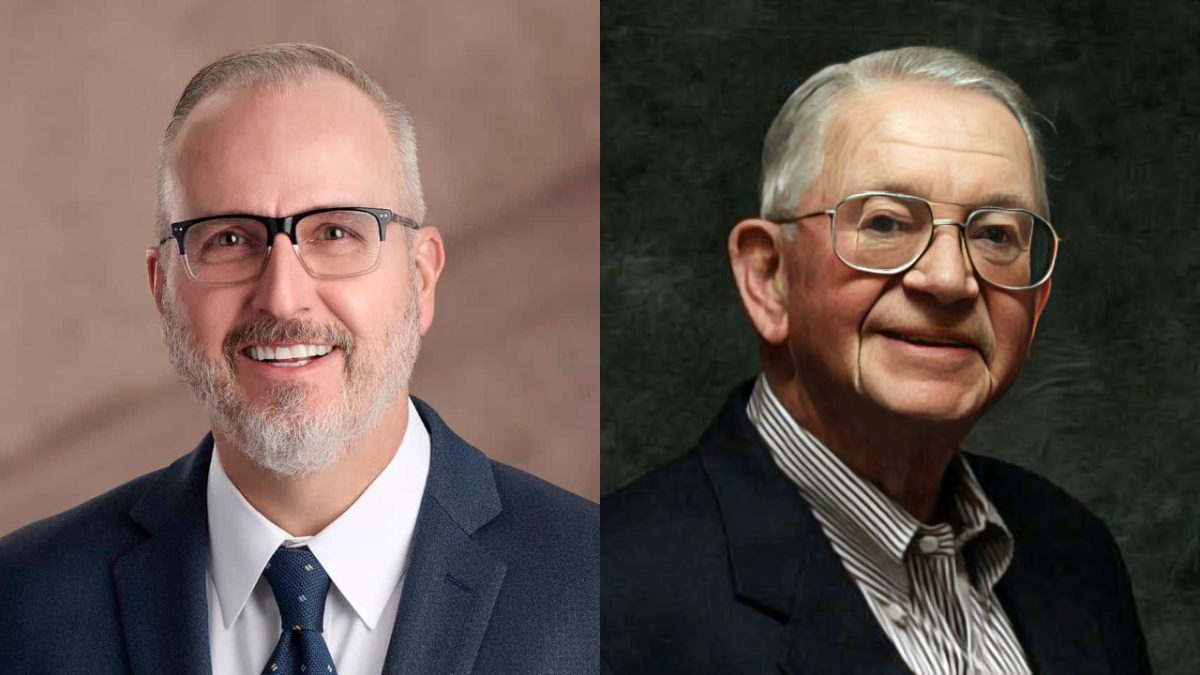A Conversation with IFF President Ron Nate & Tea Party Bob
Podcast Notes by Bob Neugebauer
The Idaho Freedom Foundation has answered the legislature’s challenge with a comprehensive plan to cut $2.146 billion from state government—enough savings to eliminate property taxes entirely without raising a single additional tax. The proposal represents the most detailed government efficiency plan ever submitted to Idaho lawmakers and exposes just how bloated state spending has become.
DOGE Committee Faces Uncomfortable Truth
Idaho’s newly formed Department of Government Efficiency committee requested recommendations from IFF, perhaps not expecting such a thorough response. The foundation’s five-and-a-half page document identifies savings equivalent to 15.2% of Idaho’s total $14.1 billion budget, targeting everything from Idaho Public Television to the entire Department of Environmental Quality.
The committee’s composition reveals the challenge ahead. Despite its efficiency mission, leadership appointed seven legislators with high spending scores and only one fiscal conservative, Heather Scott. This structure suggests the committee may prioritize political palatability over genuine reform, making IFF’s detailed recommendations even more crucial for accountability.
Key targets include eliminating Idaho Launch, consolidating dozens of agricultural commissions, and questioning whether Idaho needs a $250 million state agency whose primary function is implementing federal environmental regulations. The Department of Environmental Quality exemplifies government mission creep—Idaho taxpayers fund state employees to do work the federal government would otherwise handle directly.
From $7 Billion to $14 Billion: A Spending Crisis
The magnitude of Idaho’s spending growth becomes clear through historical perspective. When current IFF President Ron Nate entered the legislature, the state budget was under $7 billion. Today it exceeds $14 billion—a doubling that far outpaces population growth or inflation.
This explosive growth occurred during supposed fiscal conservative governance, revealing how special interests and bureaucratic momentum overcome stated principles. Each marginal spending increase seems reasonable in isolation, but the cumulative effect represents a fundamental transformation of Idaho government from limited to expansive.
The proposed cuts would eliminate approximately 1,300 state employees—a significant reduction in government workforce that reflects how extensively state employment has grown. Idaho has become the state’s largest employer, a distinction that should concern anyone who values private sector economic leadership.
The Economics Education Crisis
The spending explosion stems partly from legislators’ fundamental misunderstanding of basic economic principles. Most elected officials have never taken economics courses, yet they make decisions affecting billions in taxpayer dollars and the entire state economy.
Economic literacy isn’t optional for public officials—it’s essential for competent governance. Understanding scarcity means recognizing that resources are limited and choices have consequences. Grasping incentives helps predict how policies will actually affect behavior, not just intended outcomes.
Six Principles Every Legislator Should Know
Scarcity requires trade-offs. Government cannot provide unlimited services without unlimited costs. When government competes with private sector for scarce resources, it drives up prices and reduces availability for everyone else.
Rational self-interest drives behavior. People respond to incentives by doing more of whatever brings benefits and less of whatever imposes costs. Subsidize something and get more of it; penalize something and get less of it.
Marginal analysis reveals how small changes create large effects. A seemingly modest 1% sales tax increase from 5% to 6% actually represents a 20% increase in tax burden—the kind of mathematical reality legislators routinely ignore.
Unintended consequences often overwhelm intended benefits. Well-meaning policies frequently backfire when lawmakers fail to consider how affected parties will actually respond. The classic example involves airline regulations intended to save infant lives that actually increased infant deaths by encouraging families to drive instead of fly.
Opportunity cost means nothing is free. Every government dollar spent means less money available for private alternatives. Every program funded means other priorities go unfunded. These trade-offs deserve explicit consideration, not wishful thinking about unlimited resources.
Scientific analysis provides objective evaluation of policy effectiveness. Economics uses empirical data to test hypotheses, unlike political rhetoric that prioritizes good intentions over measurable results.
Learning from Success Stories
The most effective political leaders have understood these principles. Ronald Reagan studied economics and applied free-market insights to governance. Phil Gramm brought economic expertise to Congress. Both achieved significant policy successes by respecting economic realities rather than fighting them.
Argentina’s current president, Javier Milei, demonstrates what happens when economically literate leaders take charge. His 28% government reduction has sparked economic growth by removing bureaucratic obstacles and reducing the tax burden on productive citizens.
The Path Forward
Idaho’s DOGE committee now faces a choice: embrace serious reform or engage in cosmetic adjustments that preserve the status quo while claiming efficiency improvements. IFF’s recommendations provide a roadmap for genuine change, but implementation requires political courage to confront entrenched interests.
The broader solution involves mandatory economics education for all elected officials. Understanding basic economic principles should be a prerequisite for making economic policy decisions. The cost of economic illiteracy—measured in wasted taxpayer dollars and foregone prosperity—far exceeds the investment in proper education.
Citizens deserve representatives who understand the policies they’re voting on. Economic literacy isn’t about partisan politics—it’s about competence. Whether Republican or Democrat, officials who grasp scarcity, incentives, and opportunity costs will make better decisions than those who don’t.
Idaho stands at a crossroads. The state can continue expanding government until it resembles the high-tax, high-regulation states people flee, or it can embrace the limited government principles that originally made Idaho attractive. IFF’s $2.1 billion savings plan shows the path toward fiscal sustainability and individual prosperity.
The question isn’t whether these cuts are politically easy—they’re not. The question is whether Idaho’s leaders will choose long-term fiscal health over short-term political convenience. The DOGE committee’s response will reveal whether this legislature is serious about efficiency or simply managing public expectations while preserving the spending status quo.




3 replies on “Idaho Freedom Foundation Delivers $2.1 Billion Reality Check to DOGE Committee”
Excellent….we’ve been settling for easy for way to long.
Great article! Is this document available? I’d love to read it and email my legislator…
Outstanding article.
A link to the actual document would help everyone see the good work of the IFF.